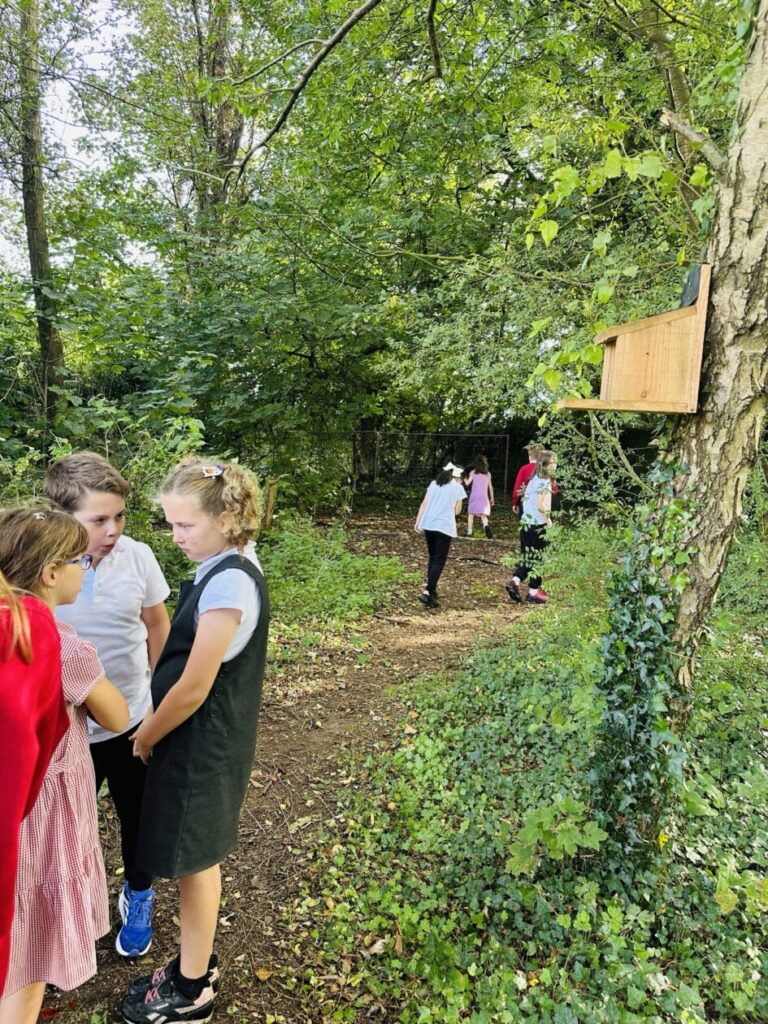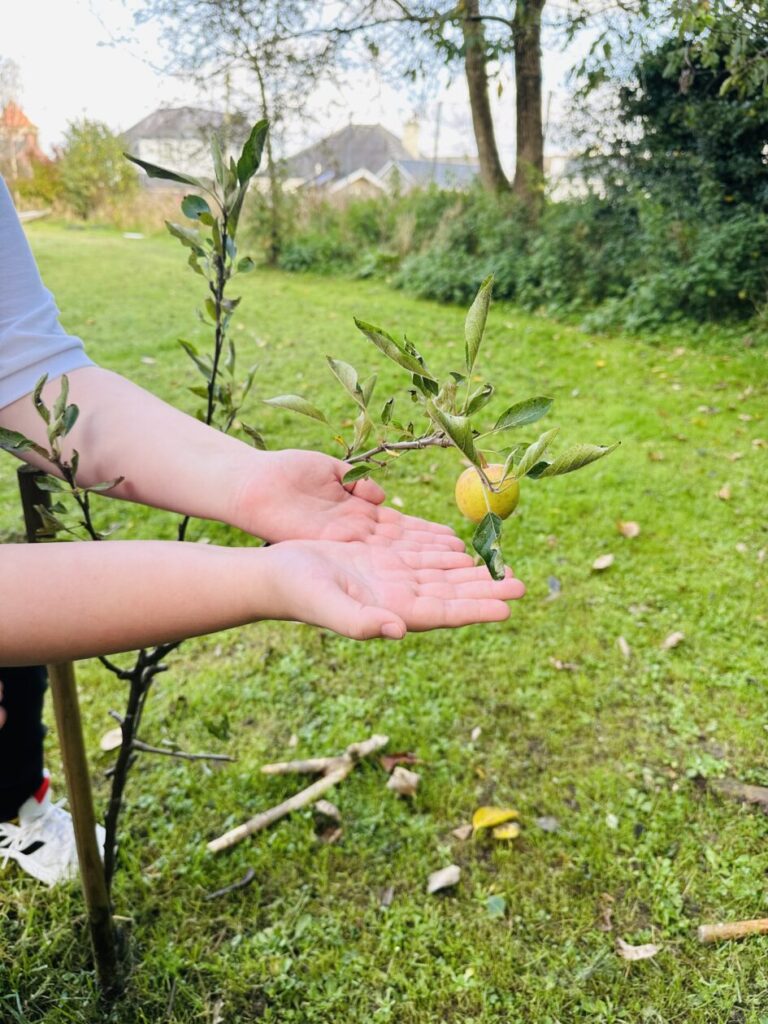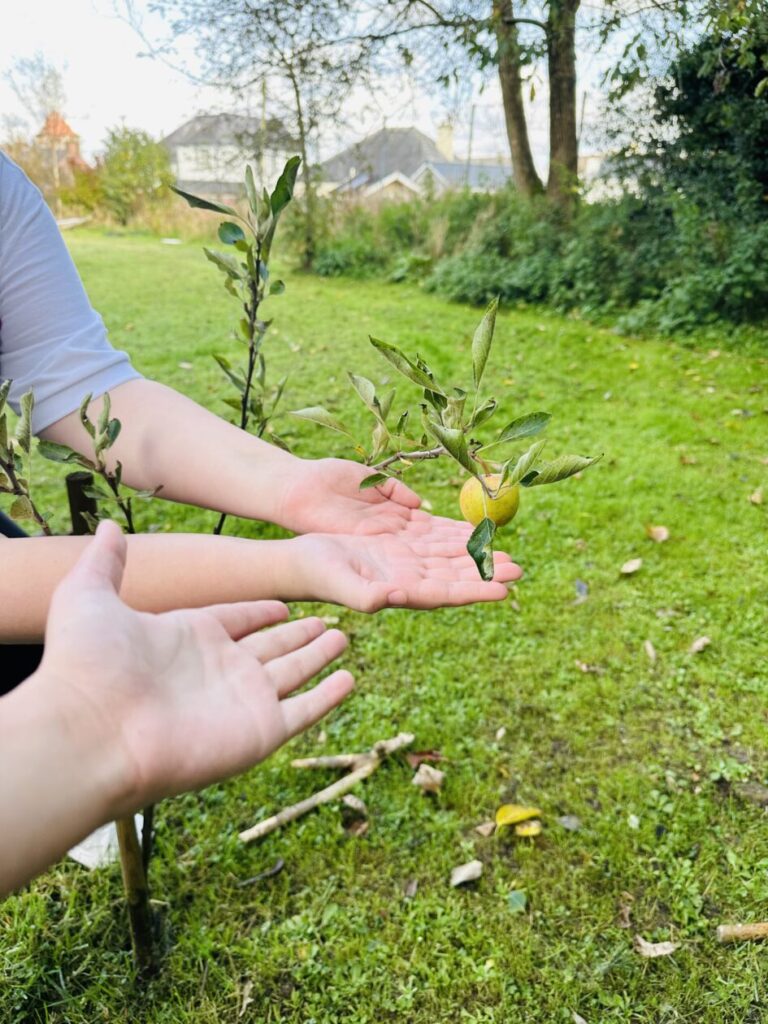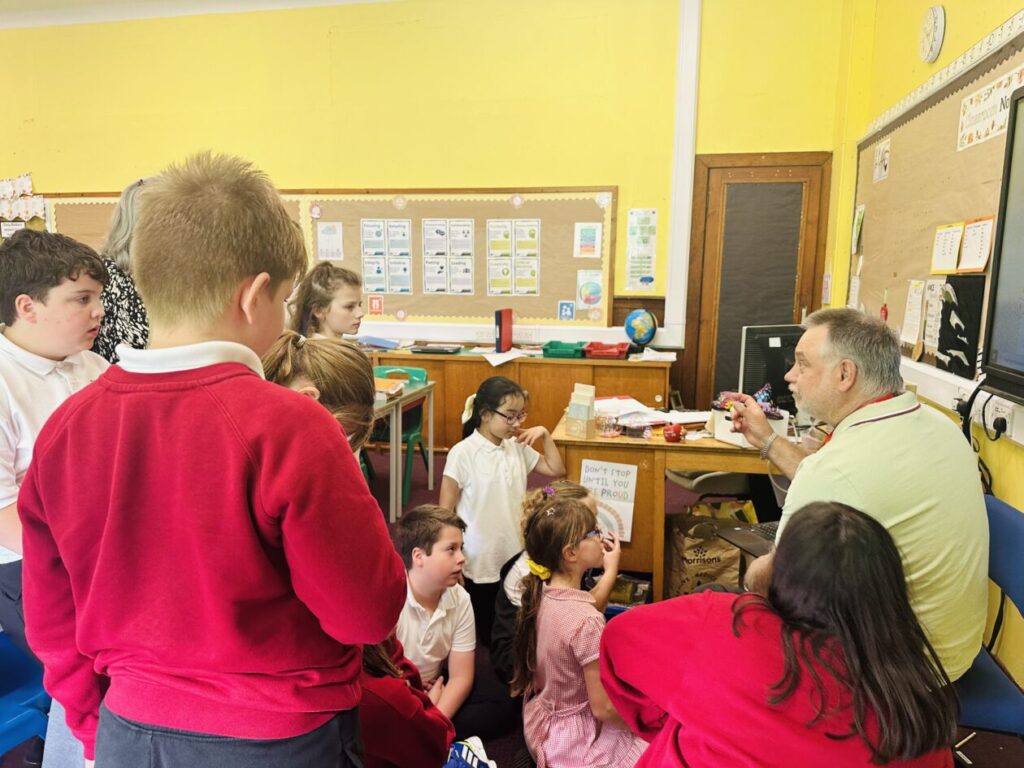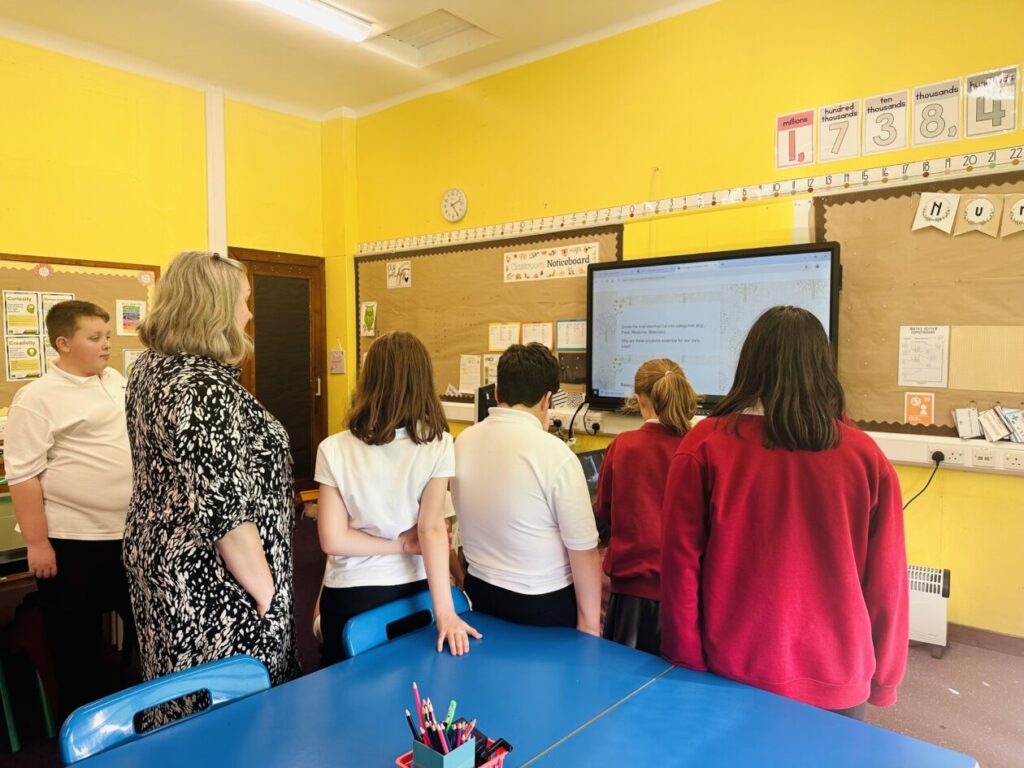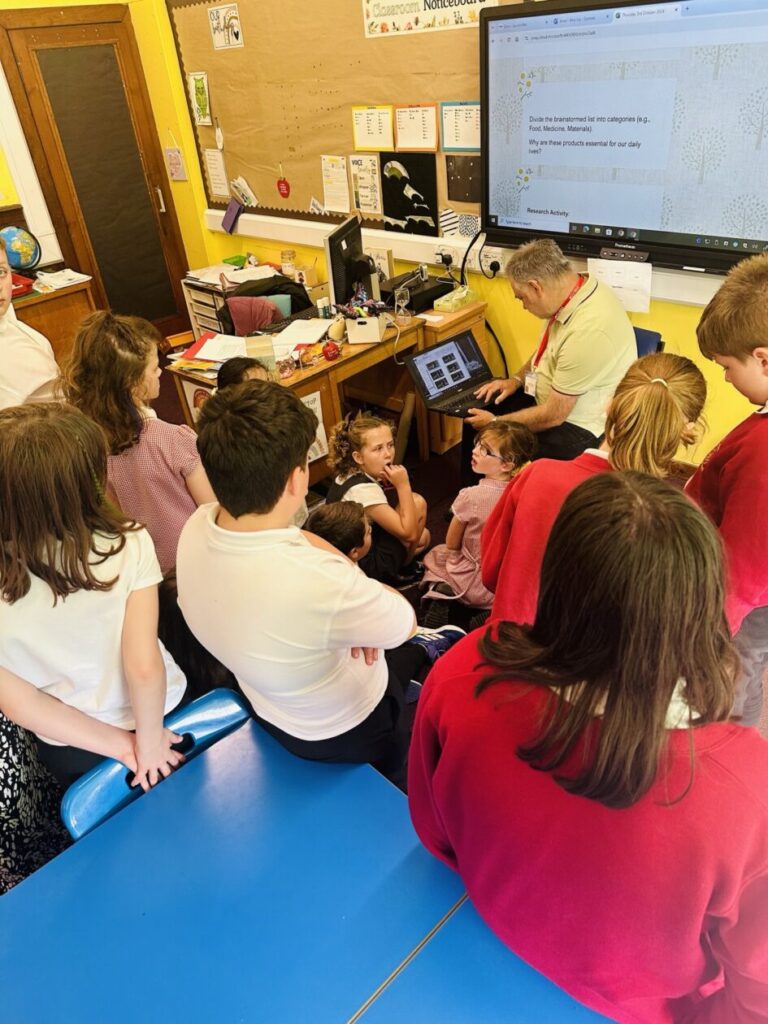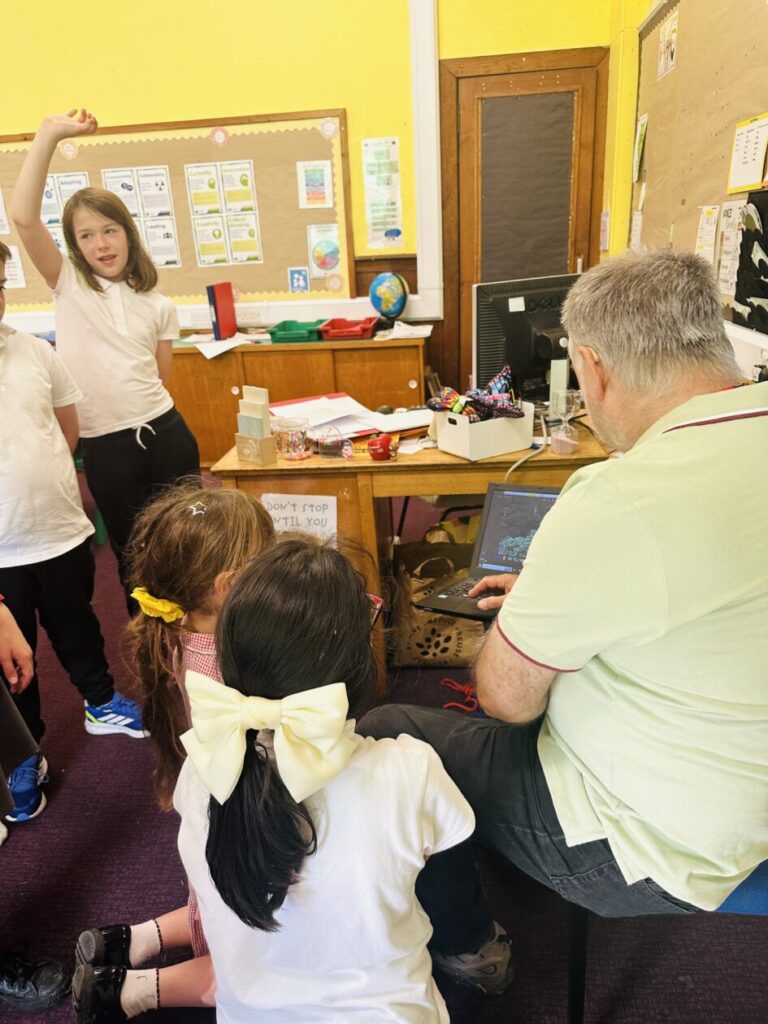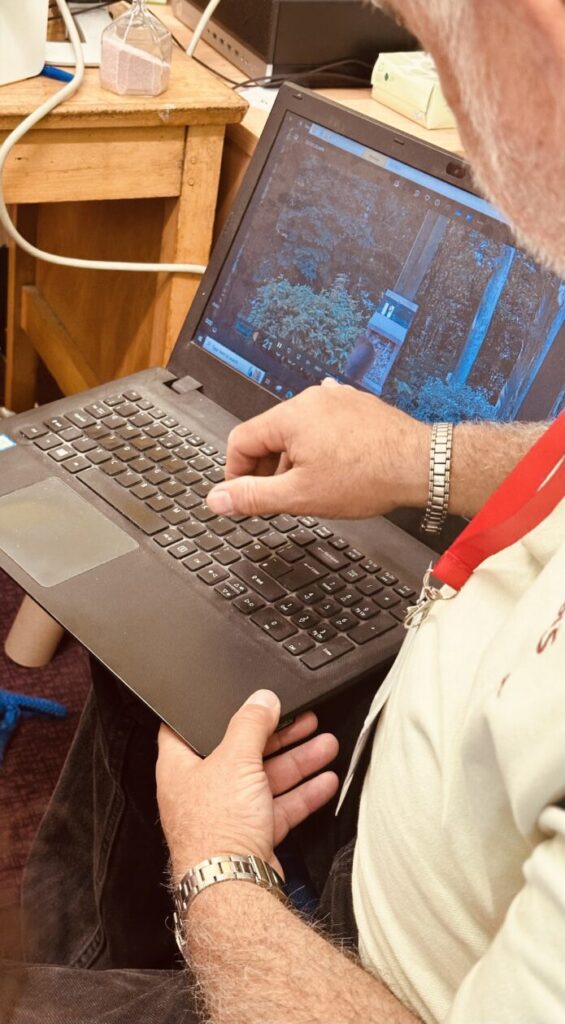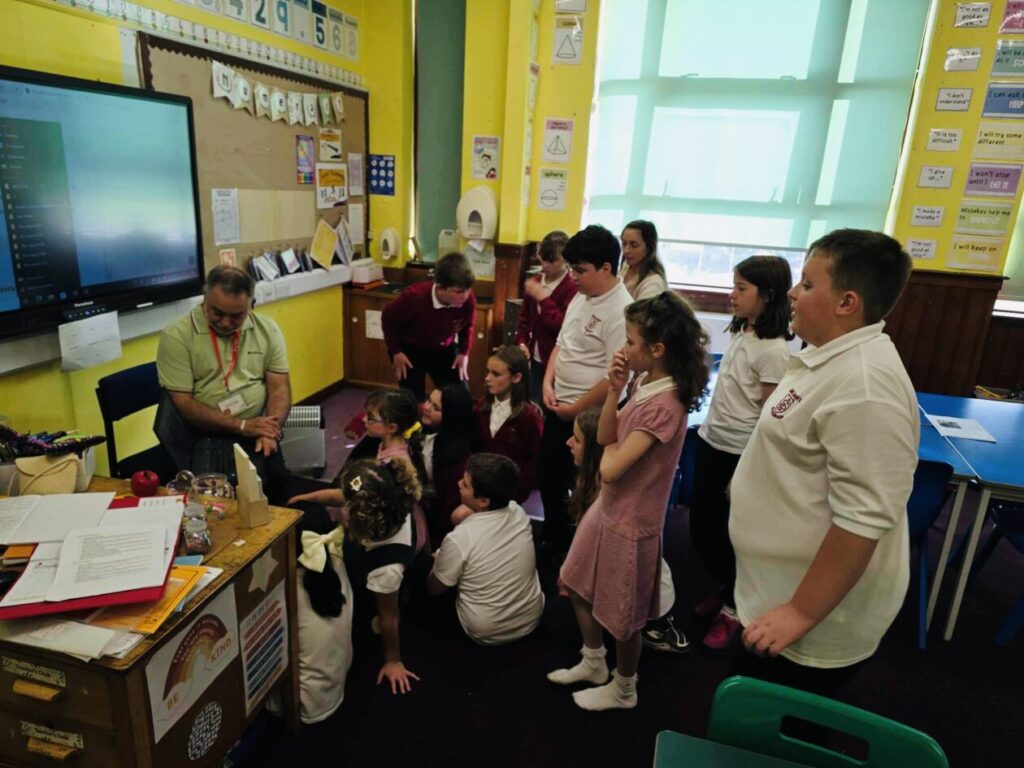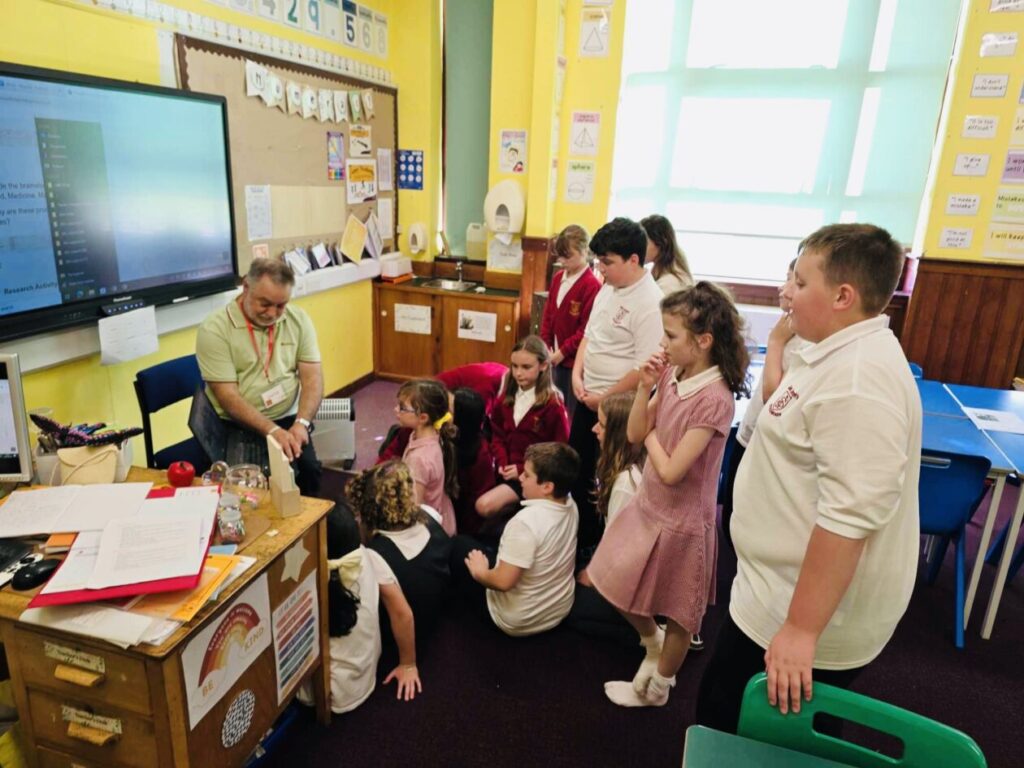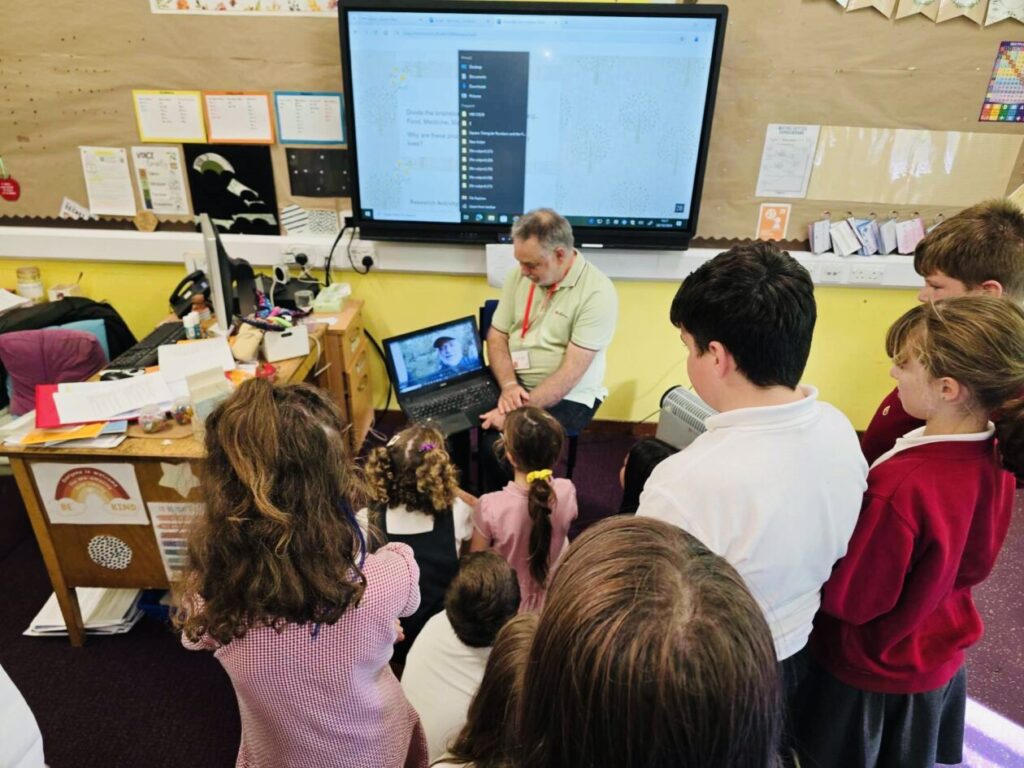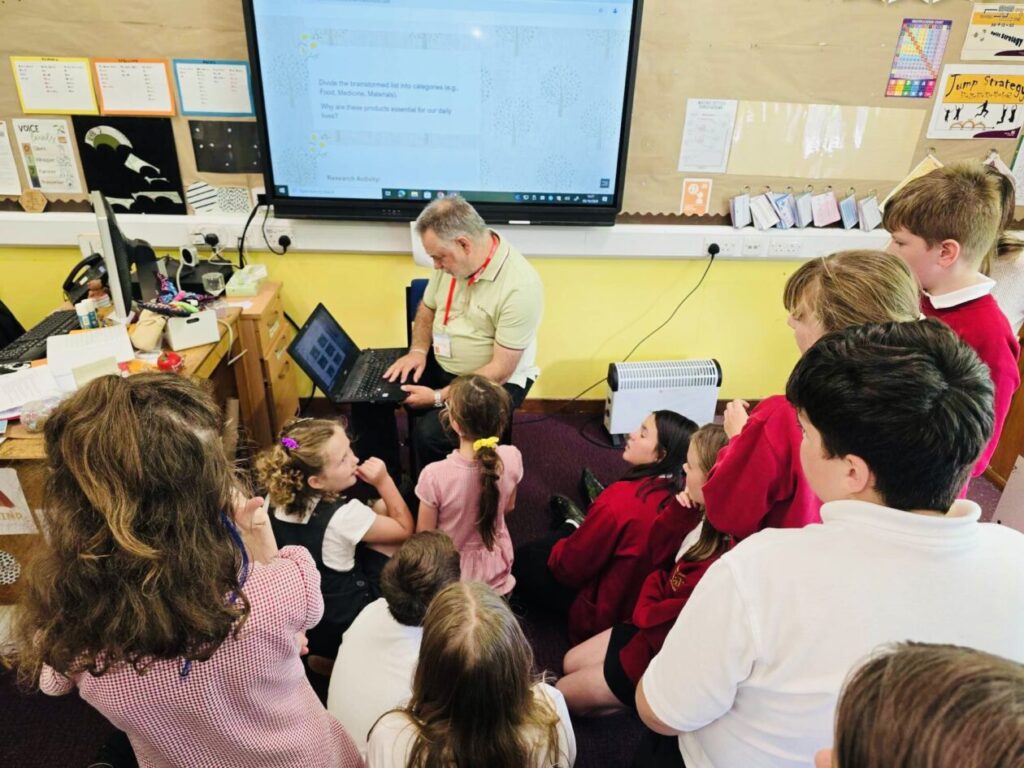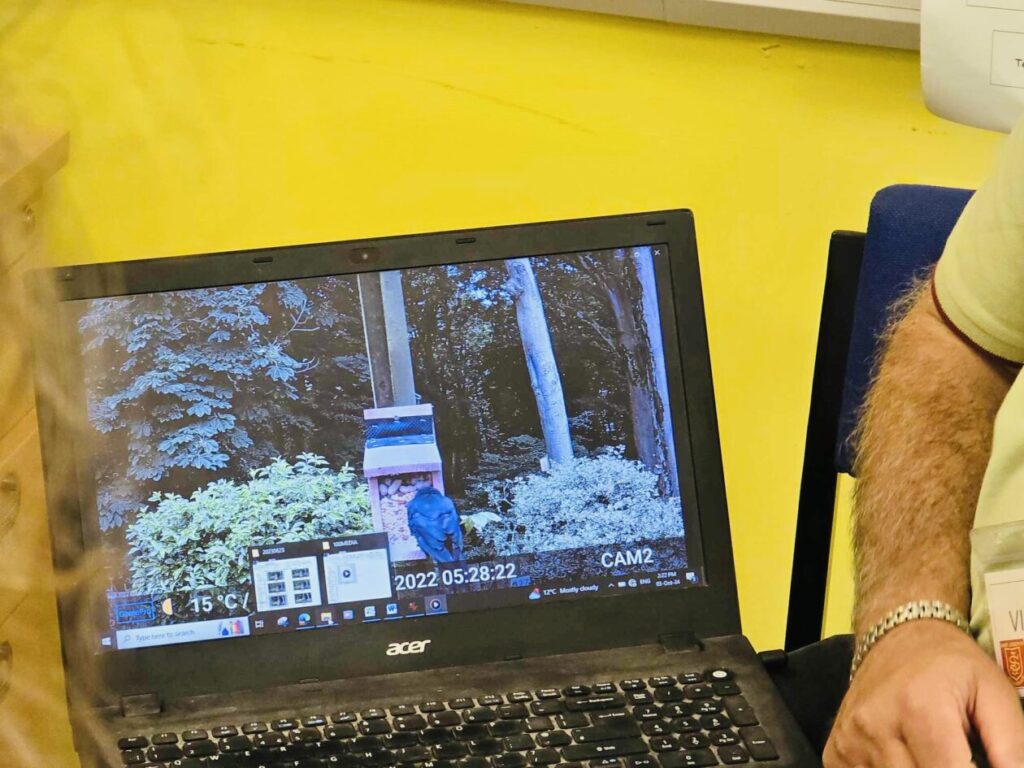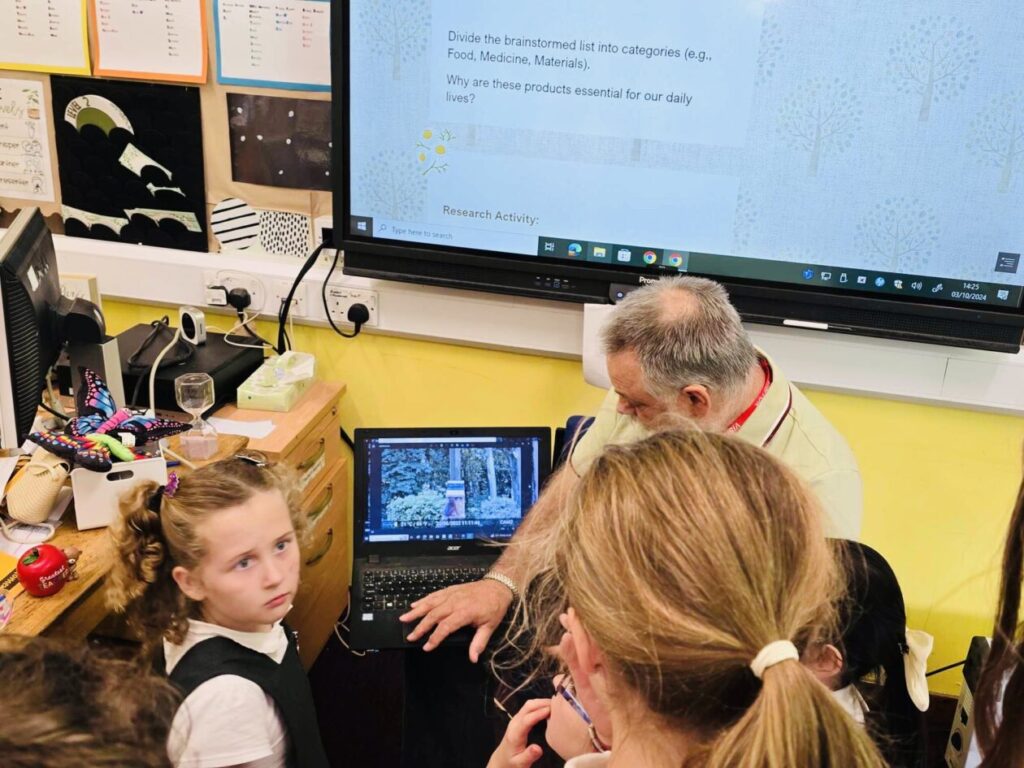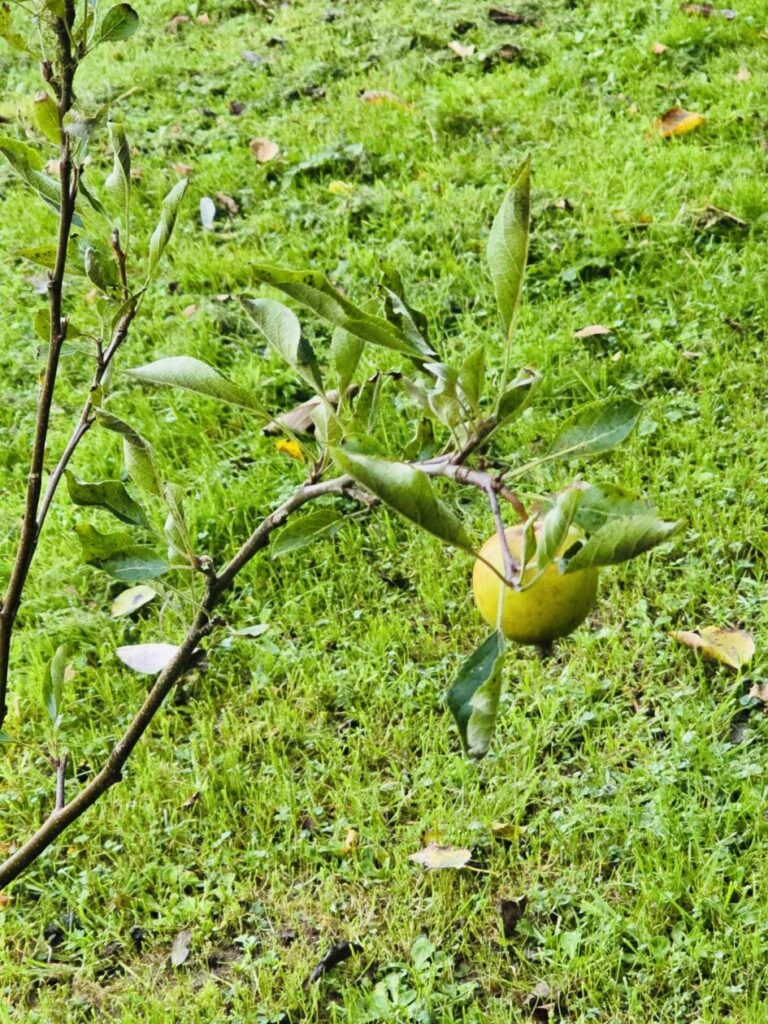Exciting Visit from Saving Scotland’s Red Squirrels Charity!
This week, our Primary 5-7 class had an exciting visit from Nigel, a representative from the Saving Scotland’s Red Squirrels (SSRS) charity. As part of our social studies topic on Scottish local biodiversity, Nigel came to share his knowledge about red squirrels and how we can help protect them and other native Scottish mammals.
Nigel gave an engaging presentation on the importance of red squirrels to our ecosystem and how we can play a role in conserving their population. With great enthusiasm, the children listened and asked questions about these amazing creatures, learning how to identify them and understanding the threats they face from non-native species and habitat loss.
After the talk, we headed outside to our wildlife garden, where we currently have squirrel feeders set up. Nigel showed us how to carefully take out the SD card from our camera trap and check for any recent activity. It was so exciting to see if we had captured any squirrel visitors on camera! We put in a new SD card and will keep monitoring to see if we get more activity in the coming weeks.
While we were out in the garden, the children made a thrilling discovery—an apple growing on one of the trees in our orchard! Everyone was delighted to see the fruit of our efforts in caring for our school grounds. We’re looking forward to seeing how our orchard continues to flourish.
Soon, Donna Westbrook will be working with our Eco Committee to refill the squirrel feeders, making sure our furry friends have plenty of food. Also, Norval Dampney will join us again to help tidy up the orchard trees and start mulching to promote healthy growth.
It’s wonderful to see our school community getting involved in protecting local wildlife and nurturing our environment. Check out the photos below to see all the action! Well done, everyone!
- UNCRC Children’s Rights Covered:
- Article 12: Right to express views and have those views considered.
- Article 13: Right to receive and share information.
- Article 28: Right to an education that includes learning about the environment and sustainability.
- Article 29: Right to education that develops respect for the environment.
- SDG Goals Covered:
- Goal 4: Quality Education – Providing knowledge and understanding of biodiversity and local wildlife conservation.
- Goal 13: Climate Action – Encouraging environmental stewardship and actions to protect local species.
- Goal 15: Life on Land – Promoting the protection and sustainable management of local ecosystems and native species like the red squirrel.
- SHANARRI Indicators:
- Responsible: Learning about conservation and taking responsibility for protecting local biodiversity.
- Achieving: Developing new skills and knowledge about wildlife monitoring and habitat care.
- Included: All pupils had the opportunity to engage with the visitor and contribute to conservation activities.
- Nurtured: Caring for the local environment and promoting a nurturing attitude towards wildlife.
- Meta-skills Used:
- Communicating: Asking questions, discussing ideas, and sharing findings during the talk and outdoor activities.
- Curiosity: Exploring the wildlife garden and being excited about the apple discovery and the potential for squirrel sightings.
- Sense-making: Understanding the role of red squirrels in the ecosystem and how their protection is vital.
- Problem Solving: Checking the SD card and planning next steps to attract more squirrels.
- Initiative: Taking proactive steps to maintain the feeders and keep the wildlife garden in good condition.
- Collaborating: Working together with Nigel, Donna, and each other to support the conservation of red squirrels.
- Focusing: Paying attention to instructions on handling equipment and monitoring the wildlife cameras effectively.
- Adapting: Responding to the new information and ideas shared by Nigel and planning to update the feeders and garden setup.

